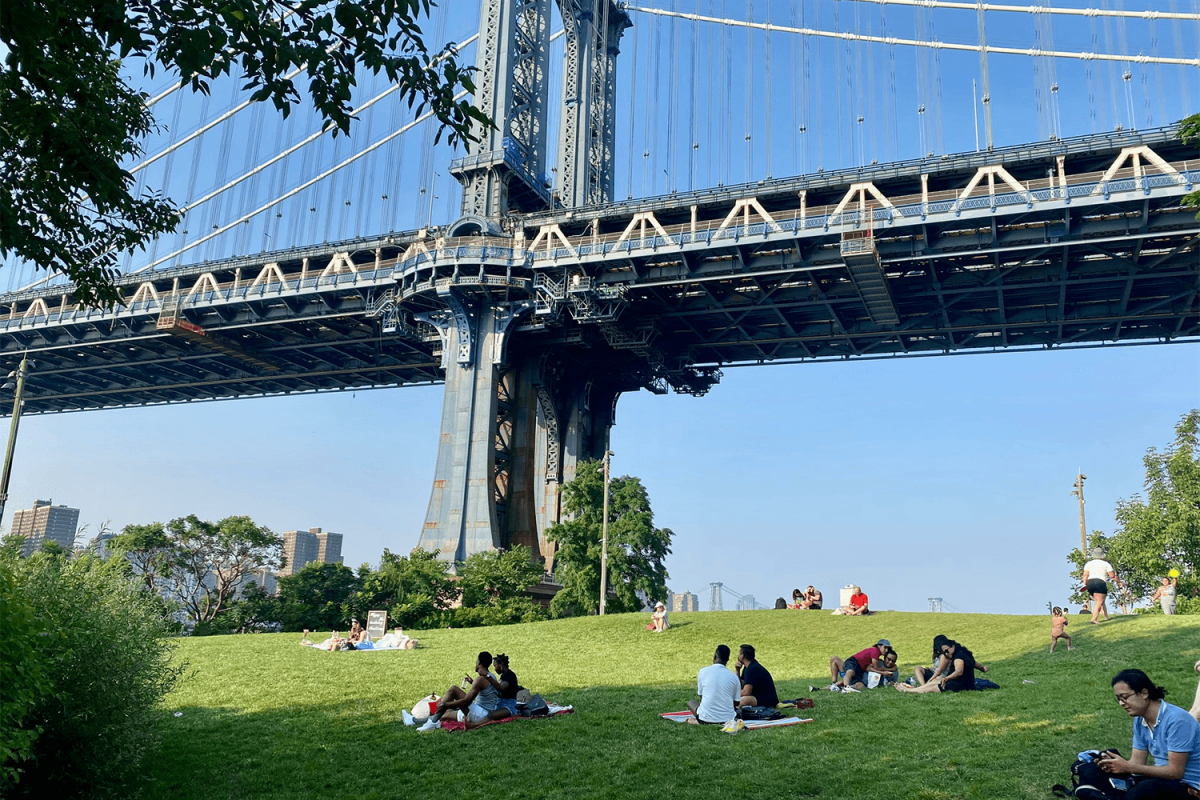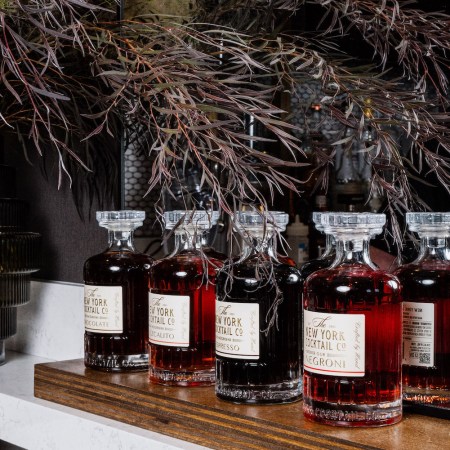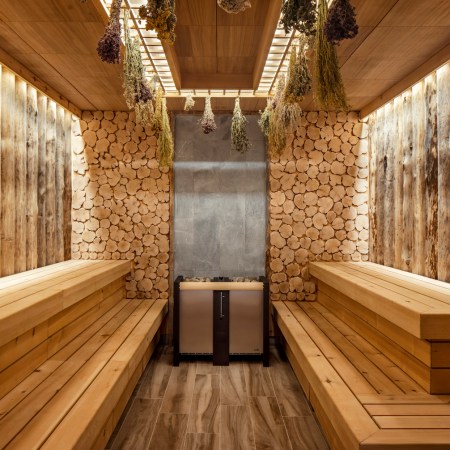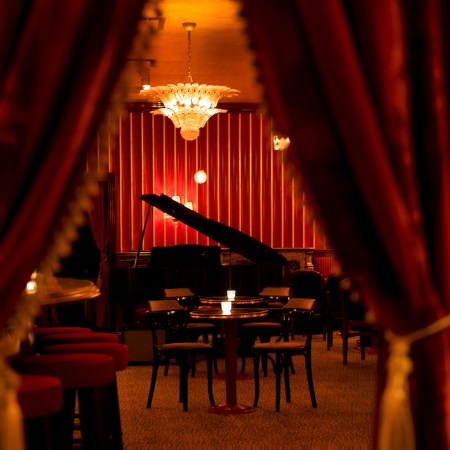Every New Yorker has a favorite public park where they go to clear their heads, take an afternoon constitutional, set up a picnic blanket or let their dogs run around unleashed in twilight hours. And just like New Yorkers themselves, every park in this city is unique, marked by its own signatures and quirks that keep people coming back for more: the best views, the lushest grass, prime people-watching, tennis courts, sunbathing opportunities, playgrounds and more.
While most people already know about NYC heavy hitters like Central Park and Prospect Park, there are also hundreds of other amazing green spaces throughout the five boroughs. (The Bronx, despite being the second smallest borough in size, actually beats out the rest of the competition with the most public recreation land.)
The city’s first officially designated green space was Bowling Green Park, located in what is now the Financial District, established and named on March 12, 1733 “for the Beauty and Ornament of the Said Street as well as for the Recreation & Delight of the Inhabitants of this City.” It’s hard to believe that the same parks that our dogs take shits in today were around hundreds of years ago; Fort Greene, Tompkins and nine others were designated all the way back in 1839 — a mere five years after the Village of Brooklyn was incorporated as a city. One year later, the iconic Green-Wood Cemetery opened to the public, drawing in New Yorkers from all over and inspiring the creation of both Prospect and Central Park.
Today we still visit the parks for recreation and delight, but not all of them were created equally. Thus we provide our guide to the best parks in all five boroughs. With there being more than 1,700 parks, playgrounds and recreational facilities in the city to choose from, this is by no means an exhaustive list, but it is a pretty damn good place to start.
Manhattan
Washington Square Park
A visit to the vibrant Washington Square Park is always an adventure, and the space itself went through a wild history of iterations before becoming the beautiful public park it is today. It’s named after George Washington, who was inaugurated in NYC back in 1789. The land was once a marsh located near an Indian village, and once it was acquired by the City’s Common Council, it was used for public executions. Before your next visit, try Googling the legend of the “Hangman’s Elm.”
Washington Square Park as we know it today serves as a top contender in the city for people watching, always hosting a dynamic mix of New Yorkers and very curious tourists. It’s an amazing location for photos thanks to its iconic stone arch and fountain, but also a place to see protests in action, listen to jazz music, watch skaters attempt tricks and witness some of the best amateur chess games this side of the Red Square (we don’t actually know if there are chess games in the Red Square, but if there are, they’re probably bonkers). It’s the kind of park you can simply stroll through and see all you need to see, or bring a small blanket and your lunch to if you want to stay for a while.
Central Park
Central Park really needs no introduction as one of the most famous in the world, and the most visited, with more than 25 million guests per year. The vastness of it is hard to comprehend until you try to conquer it in person, with nearly 50 fountains, monuments and sculptures, 36 bridges and arches, and 21 official playgrounds to find on its grounds.
You could probably go to Central Park every day for a month and still not see all there is to see, with the scene changing drastically from season to season. In summer, eager sunbathers set up towels in hopes of catching some rays, while spring brings new greenery and trees bursting with flowers. During the fall, couples stroll hand in hand with cups of coffee peeping the foliage, and winter hails in everything from two ice rinks (Wollman and Lasker) to sledding to a Christmas market.
Seasonality at Central Park can also be found in the flocks of migratory birds that call it home during different parts of the year, making it a birder’s paradise. If you’ve been meaning to give the highly relaxing hobby a try, Central Park is a great place to start.
Many people like to compare their favorite “hidden gems” within the park, which exist as secrets solely because of how large it is. Those walking around after enjoying a bit of ganja (for legal purposes, we didn’t say this) might want to check out the enormous brass Alice in Wonderland statue or the Strawberry Fields memorial, while nature lovers can seek out the Hallett Nature Sanctuary or The Ravine. To find any of these spots, just type them into your Google Maps app.
Tompkins Square Park
Occupying 10.5 acres of the East Village is Tompkins Square Park, whose trees are so big because they’re full of secrets. Tompkins is different from all the other Manhattan parks on this list for a bevy of reasons, the principal one being its proximity to tons of bars and restaurants. A visit to Tompkins can be relaxing if you’re wearing noise-canceling headphones, but otherwise it’s a place to take in the sights and the sounds, and a very social park.
It’s history is fairly gritty, known as a place for the homeless to take refuge and the site of numerous ongoing riots. Also taking refuge at the park — historically and today — are tons of local artists and musicians, which definitely adds to the vibe of the space.
Tompkins isn’t all grunge, though. It’s home to the city’s first ever dog run, which is still usually packed with cute pups, and every Sunday morning year-round you can peruse its small but quality greenmarket for locally grown produce and bouquets of flowers.
Riverside Park
Riverside Park is often considered one of Manhattan’s most scenic waterfront parks, and is so stunning that it’s one of only eight officially designated scenic landmarks in the city. Stretching across more than 300 acres from around 59th to 181st Street on the Upper West Side, Riverside Park is the perfect place to come for a contemplative stroll, a morning jog or to watch the sunset with someone special.
There’s plenty to take in at the park besides the water views, too, with more than 25 monuments, plaques and statues on view, including two of the five monuments in the city dedicated to historic women. To see an interesting slice of history, check out the train locomotive on 62nd Street. It’s a 60-year-old, 95-ton engine that was once used on the Brooklyn waterfront.
Visitors also tend to flock to the park during springtime, when the waterfront is absolutely covered in budding pink cherry blossoms. Don’t worry too much about crowding, though, as there’s a four-mile long trail on the park’s esplanade lined with them.
Fort Tryon Park
I’m just going to come out and say it: Fort Tryon Park is the most beautiful in NYC. If that sounds like a controversial statement, then you haven’t spent enough time there yet, sorry.
Back in the early 1900s, the land was purchased by John D. Rockefeller, Jr., who then enlisted the son of Central Park’s architect to develop a plan for the park. Before its construction, Rockefeller gifted the land to the city of New York and it was dedicated to public use.
Now this stunning waterfront park in Upper Manhattan can be enjoyed in many ways, from wandering around its eight miles of pathways to visiting the iconic Met Cloisters, a branch of the Metropolitan Museum of Art that boasts nearly 5,000 medieval works. Even more beauty can be found in the city’s largest public garden, the Heather Garden, where you can see 500+ well-tended varieties of plants, trees and shrubs.
If that wasn’t enough, Fort Tryon is also home to Manhattan’s largest dog run, making it the perfect park for owners and lovers alike. Bring your pup for a scenic stroll with views of the Hudson, then relax at the gazebo specifically designed for dog owners.
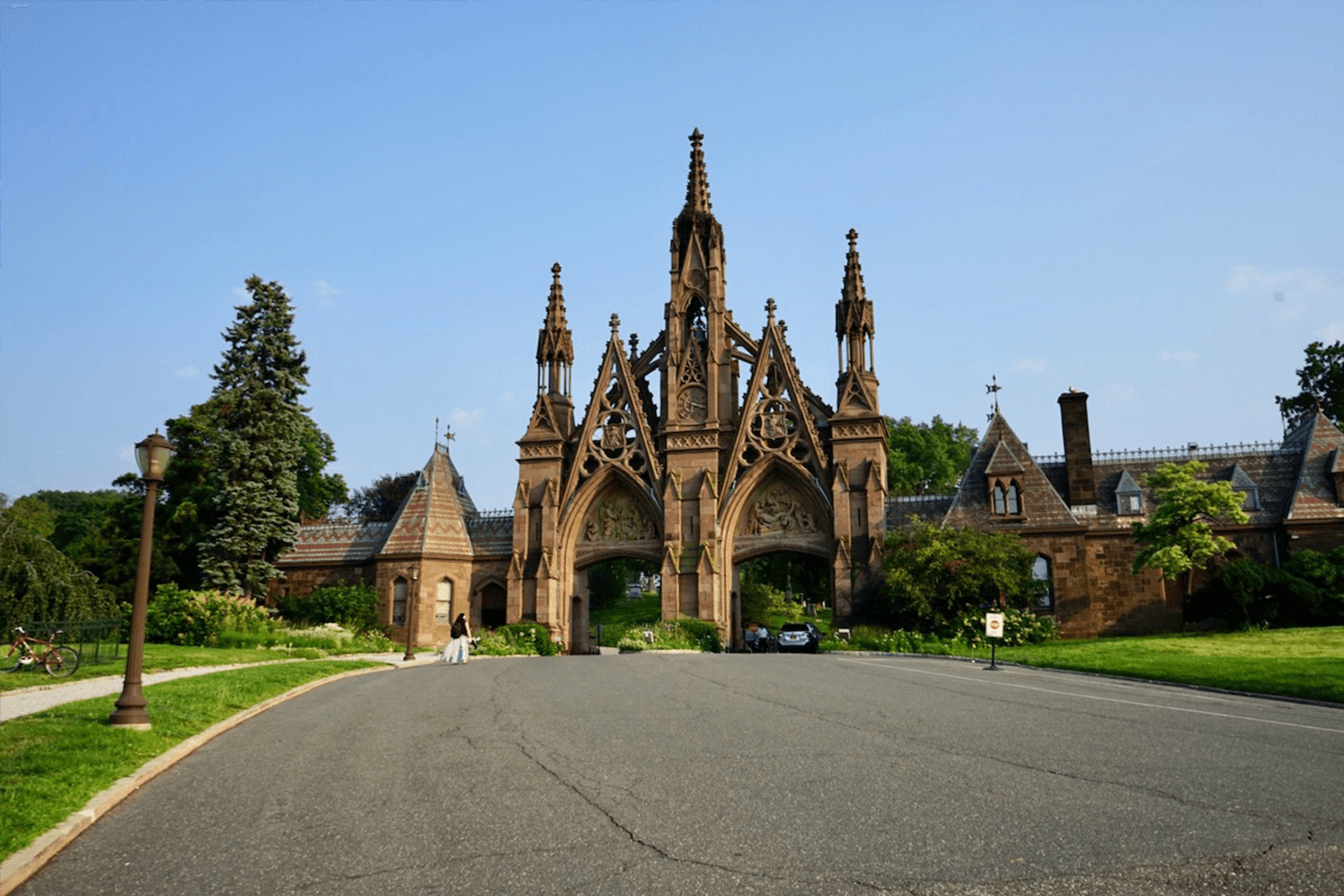
Brooklyn
Prospect Park
While many consider Prospect Park to be the Central Park of Brooklyn, its vibe is very different. What Prospect lacks in flashy statues and monuments it makes up for with lush, ample space to do whatever the hell you want. It’s home to the longest continuous meadow of any urban park in the entire country, in fact, meaning there’s tons of room for picnicking, lawn games or dogs to run around off-leash in the morning.
The sheer size of Prospect Park (585 acres, to be exact) also means that wandering into different areas of its expanse will yield totally diverse crowds. Enter at the bottom of the park and you’ll encounter entire parties of families and communities grilling out and playing music, while the top of the park is inhabited on Saturday mornings by people picking out their weekly produce at the Grand Army Plaza Greenmarket, and runners making their morning rounds. Joggers and bikers can be found dominating the circumference of the park at any daylight hour, though.
Besides the Meadow, adventures around Prospect Park also yield unexpected finds, like the entire 55-acre lake at the southern end of the park that you can literally kayak on, or the LeFrak Center where you can slide around on roller or ice skates, depending on the season. Dog lovers should seek out the dog beach, an area where pups splash around in the water to cool down during the summer.
Green-Wood Cemetery
Truly the blueprint for some of New York’s greatest parks, Green-Wood is so much more than just a cemetery. To be clear: it is a cemetery, and people are still buried there, so be respectful. But walking around the park just before nightfall can feel eerie in a magical, “is a ghost going to follow me home?” kind of way.
There, you can find the tombstones of notable New Yorkers like Jean-Michel Basquiat, William Magear “Boss” Tweed, Leonard Bernstein and Henry Steinway. A visit to the Soldiers’ Lot is a must; it was created during the Civil War for free veteran burials, and more than 5,000 soldiers are buried there, a large percentage of whom are buried in unmarked graves. Unique mausoleums can also be found around the grounds, like the ornate Victorian-style one that belongs to Charlotte Canda, a young New York debutante who died in a tragic horse-carriage accident. The Van Ness Parsons mausoleum is modeled after a legit Egyptian pyramid, with elements of Christian symbolism. There lies the body of Alfred Ross Parsons, an Egyptologist and renowned pianist who died in the 1930s.
But as mentioned, it’s not just a place of final rest. It’s also a designed arboretum with 8,000 trees, and it feels like a true oasis of peace in the city. Unlike Prospect and Central, this green space attracts fewer visitors per day, meaning you can walk around for hours and possibly see only a few other strollers — partly because no dog walking or picnicking is allowed. It’s more of a place for quiet contemplation, and the perfect location for some solo book reading on a bench.
Brooklyn Bridge Park
On the short list of parks you could legitimately spend all day at is Brooklyn Bridge Park, which boasts stunning views of the water and Manhattan’s skyline among so many other good things. Covering 1.3 miles of waterfront in Dumbo and Brooklyn Heights, the park is a dynamic area that’s also within walking distance of tons of great bars and restaurants.
Before it became a park, the waterfront area served as a ferry landing in the 19th and 20th centuries and was full of industrial warehouses. Then, in 1984, the cargo operations were shut down and a decade later a development corporation was put together to plan the construction of a park. That construction was delayed another whopping 10 years, so the park is actually fairly new having just opened in 2010.
Now, Brooklyn Bridge Park has six piers with biking and walking trails, grassy areas for incredibly scenic picnics, sports courts, and even a roller rink. Each pier has something totally unique to contribute, too, from sporty Pier 2 to a literal beach at Pier 4. The best space for quiet time is Pier 3, and both Piers 5 and 6 have spots to grab a bite, like local favorite Ample Hills Creamery and Fornino’s Pizza.
Another visit-worthy area of Brooklyn Bridge Park is Pebble Beach, Jane’s Carousel and the green expanse on John Street in Dumbo, which sits almost directly under the Manhattan Bridge. The views while sitting on the concrete steps of Pebble Beach at night are possibly the best in the city.
McCarren Park
Ask any longtime New Yorker about their thoughts on Williamsburg and they’ll tell you just how much the neighborhood has shifted and changed over the past couple of decades. Today, the area is a thriving, albeit gentrified, hub of some of New York’s hottest restaurants, bars, shops and nightlife spots. It’s also home to McCarren Park, which borders both Williamsburg and the charming neighborhood to its north, Greenpoint.
Just like the neighborhood it occupies, McCarren has been through several distinct lifetimes, first serving as an industrial area packed with chemical, varnish and other factories. Once the park was acquired by the city, outdoor gymnastic equipment was developed with separate facilities for boys and girls. The turn of the 20th century saw it become an athletic hub, hosting bike races and huge tennis tournaments. It also served at one point as Brooklyn’s first children’s farm, which is incredibly random.
Now, McCarren is a lively meeting neighborhood place, with tons of green space for picnicking, playing sports or swimming in its enormous public lap pool. On Saturdays it hosts its own Greenmarket, and the entire park is surrounded by great places to shop or grab a drink.
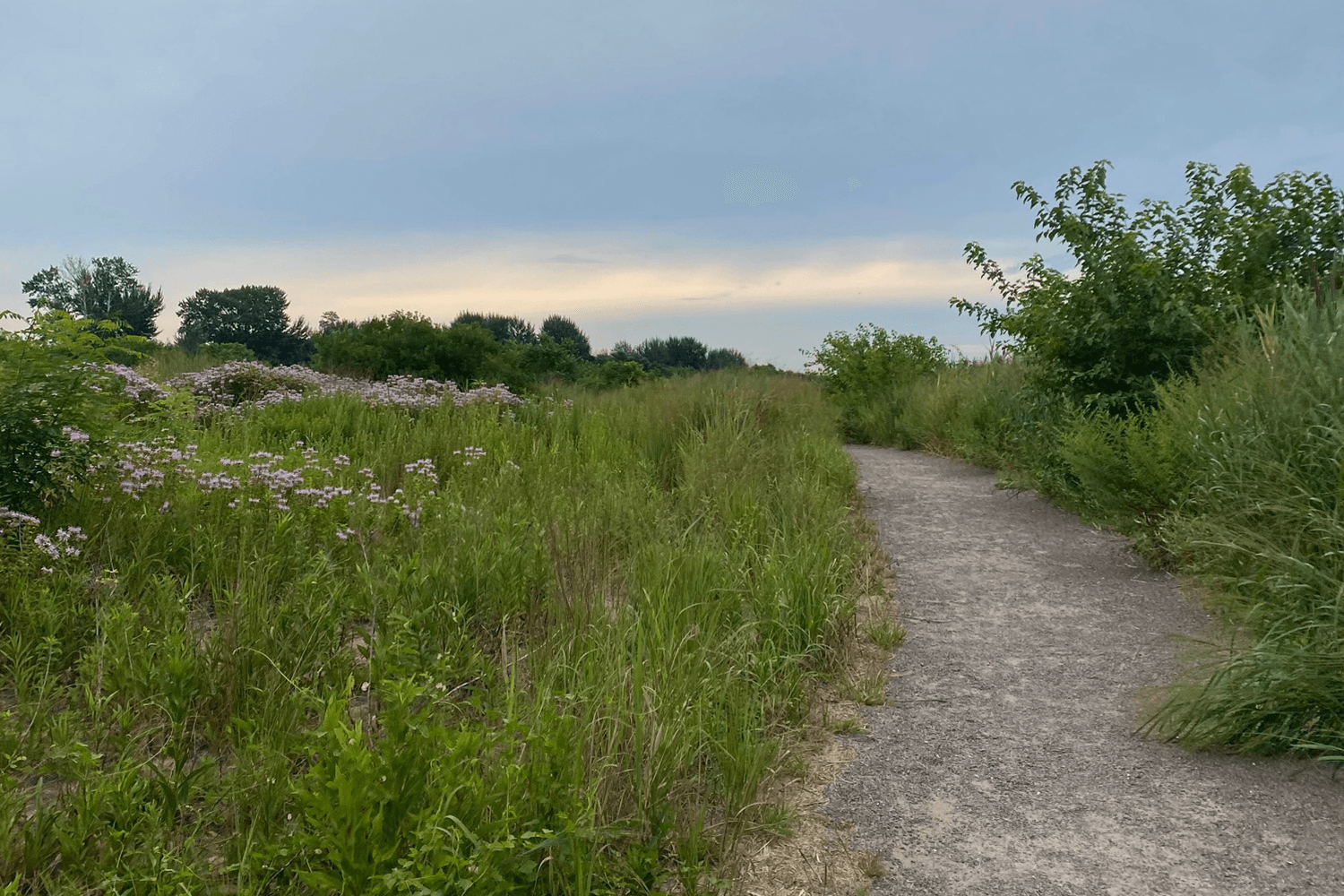
Marine Park
It’s honestly hard to believe that a place like Marine Park exists in Brooklyn. At a whopping 530 acres, it easily takes the top spot as the borough’s largest public park. It’s also unlike any other park in the city, trading classic turf for wide expanses of wild grassland and salt marsh.
One of the most popular things to do there is wander along the Salt Marsh Nature Trail, which will truly make you forget for a moment in time that you’re in New York City. All year long, various marsh birds and migratory waterfowl take flight along the water, while to your other side, wildflowers bloom. Watch out for mosquitos, though, which you can expect to encounter in ample amounts during the summer.
Besides marshland, you can also find more typical park amenities at Marine Park, like bocce courts, baseball diamonds, playgrounds and even a golf course. Yes, golfers can rejoice at the fact that they don’t need to schlep Upstate to partake in some quality New York golf. At Gerritsen inlet, nature lovers can also encounter a launching site for taking canoes and kayaks out on the water.
Queens
Astoria Park
Regardless of which borough they live in, Astoria Park is an easy favorite of many New Yorkers. Encompassing 60 acres of green space along the East River between Robert F. Kennedy Bridge and Hell Gate Bridge, Astoria Park is probably a local favorite in part because it’s so underrated, meaning you shouldn’t expect to encounter huge crowds or photo-snapping tourists there.
Instead, you’ll find stunning views of the bridges, a large expanse of green space for chilling out while watching boats float by, and tons of options for recreation. Tennis courts, athletic fields, playgrounds, a dog run — you name it, Astoria Park has it. One of its most unique draws, though, is the park’s popular pool. It’s the largest public pool, literally meeting Olympic standards, and is frequented by locals looking to beat the summer heat. The park also boasts an all-weather running track right under the RFK Bridge, and a skate park where you can watch people practice their tricks.
Flushing Meadows Corona Park
Perhaps best known as the site of not one but two 20th-century World’s Fairs, the 900 acres of Flushing Meadows Corona Park still has tons to offer visitors. By tons, we mean tons. The second largest park in all of NYC, Flushing Meadows isn’t your typical green space — it’s packed with everything from a zoo to a lake to an Aquatic Center.
Back in the 1930s it was constructed on top of an ash heap to create space for the 1939 World’s Fair. It wasn’t until it hosted its second World’s Fair in 1964, though, that the majestic and very photo-worthy 140-foot steel Unisphere was built. Still on display today, it’s essentially the Instagram calling card of the park. There are tons of other sculptures, historical plaques and water features to check out, too, all of which hearken back to the park’s decorated history.
After you’re done spending time within the park proper, there’s also plenty to see nearby, like the New York Hall of Science, the Queens Museum of Art and History, the Queens Botanical Garden and the Queens Theater. During the summer, free outdoor events are also frequent.
Forest Park
Despite being a historic park that’s been around for over a century, Forest Park tends to get overshadowed by other the city’s flashier green spaces. That doesn’t make it any less worthy of a visit, though. Spanning 500 acres, the park is full of scenic wooded areas, high hills, tons of bird species and beautiful views of the Atlantic Ocean.
The site was once inhabited by Rockaway, Delaware and Lenape Native Americans, then settled by the Dutch West India Company in 1634, with towns established that would one day merge to become the City of Brooklyn. In fact, the park was operated by Brooklyn’s Park Department before the borough of Queens officially established its own in 1911.
Before all of that, the land that Forest Park sits on was actually part of the Wisconsin glacier some 15,000 years ago. When it retreated, the Harbor Hills terminal moraine was formed, which is why the park is marked by a series of “knob-and-kettle” hills and ponds that were created by melting blocks of glacial ice. One of those ponds is the park’s beloved water hole, which attracts various migrating birds.
Besides all of that rich history, Forest Park is probably best known for its challenging golf course, which covers 110 acres and was modeled after Scottish links. The course takes up nearly one-fifth of Forest Park’s total acreage, and is definitely worth setting up a tee time at.
Gantry Plaza State Park
If golfing isn’t really your thing, you can try your hand at fishing at Gantry Plaza State Park. Yes — while most people probably wouldn’t think that line fishing is viable in New York City, think again, because Gantry has its very own fishing pier complete with a cleaning table.
A 12-acre riverside park, Gantry Plaza has some of the best views of the Manhattan skyline, with landmarks like the Empire State Building and the United Nations headquarters directly in sight. Even if you haven’t been to the park, you’ve probably seen it from Manhattan because of the giant Pepsi-Cola sign there. That’s because the northern part of the park was once part of a former PepsiCo bottling plant, and once it was closed in 1999 the sign was dismantled and reassembled into a more permanent location within the park 10 years later. Now that sign is a designated New York City landmark, and you can take great pictures of it at the park.
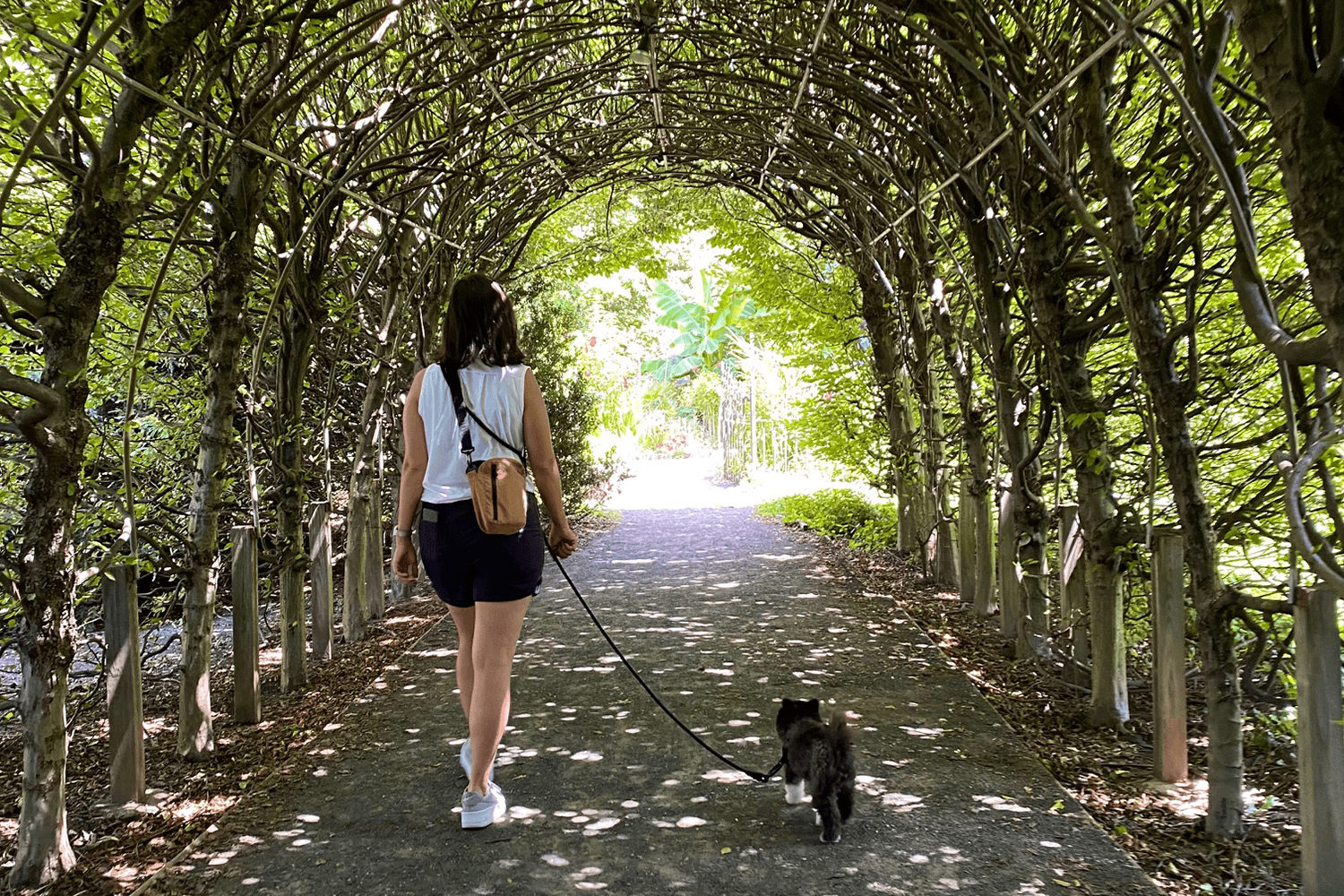
Staten Island
High Rock Park
One of the best-kept secrets on Staten Island and one of the most tranquil spots in the city, High Rock Park is less of a traditional park and more of what one would associate with an actual National Park. Head here for both casual strolls and challenging hikes, as it has both to offer.
At one point the area was threatened by the possibility of development, which would have seen it turn into a residential neighborhood full of rows of houses. It was successfully preserved, though, which means its only current inhabitants are white-tailed deer, snapping turtles, birds and ticks come summertime. (Be sure to bring tick spray if you’re planning a summer visit, and to check yourself before getting back into the car.)
Insects aside, any time of year you can check out High Rock Park’s five ponds and wetlands, like the notable Walker Pond and Loosestrife Swamp. There are six walking trails to conquer, as well as a climb to the peak of Moses’ Mountain, a 260-foot man-made hill named for City builder and Parks Commissioner Robert Moses. A man-made hill doesn’t sound particularly glorious, but the panoramic views from the top say otherwise.
Snug Harbor Cultural Center and Botanic Garden
Snug Harbor is an unexpected Staten Island gem, with free gardens to explore, a charming outdoor cafe, acres of wetland and even a classical Chinese Scholar’s Garden. The original purpose of Snug Harbor was actually to provide a refuge to retired sailors, and the buildings all over its grounds were their dorms of sorts until the 1970s.
Now it functions as a dynamic park, but visitors can still catch a glimpse of its history in one of those former dormitory buildings, which was turned into the Noble Maritime Collection and includes displays of artifacts, photos and documents representing the seafaring past of Staten Island.
The best thing to do in Snug Harbor is just wander around, because you’re bound to run into something pretty, like one of their many gardens that are almost all free to enter. The Rose Garden has more than 100 species of the fragrance flower, and the shrubbery maze within the Connie Gretz Secret Garden is perfect for keeping kids entertained. The most famous garden at Snug Harbor, though, is the New York Chinese Scholar’s Garden — one of only two classical authentic outdoor Chinese gardens in the country. You do have to pay a small fee to enter, but Staten Island residents get in free every first Friday of the month.
Also, don’t miss a walk through the Allée, which sounds fancy because it is. It’s a shady walkway created by 100+ hornbeam trees that are curved to create a long arch.
Wolfe’s Pond Park
What is there on offer at Wolfe’s Pond Park? A better question is what it doesn’t offer. Despite its name, many locals know Wolfe’s Pond for its well-maintained beach area. The beach is definitely one of the city’s best-kept secrets, and a great place to go if you want to hit the sand but aren’t up for the madness that is Rockaway during the summer. It’s not the kind of beach you’d necessarily go to for much of a swim, but perfect for relaxing on the shore.
Besides the beach, Wolfe’s Pond Park is a wildlife and plant preserve with miles of hiking trails, and also a prime location for doing more typical park things, like setting down blankets for a picnic on its green space and enjoying a barbecue with views of the Raritan Bar.
Alice Austen Park
This beautiful park is dedicated to the legacy of the groundbreaking lesbian photographer Alice Austen, who lived from 1866 until 1952. During her career, Austen challenged strict Victorian gender norms, capturing images of life in Staten Island and Manhattan. The park centers around a museum that was once her home, which was built in 1690 and expanded by Austen’s family in 1884. She lived there for 30 years of her 53-year relationship with Getrude Tate, a loving relationship that her family never approved of, even after her death, when they denied Austen’s request to be buried next to Tate.
Today, visitors can visit the historic home, which gives a real sense of New York’s past. Inside are some of the 7,000 photographs that Austen captured of the quickly changing city and its immigrant populations, Victorian women’s social activities and more. The picturesque grounds of the home overlook Buono Beach, which borders the New York Bay, and regular activities, like yoga on the lawn, are hosted by the National Park Service.
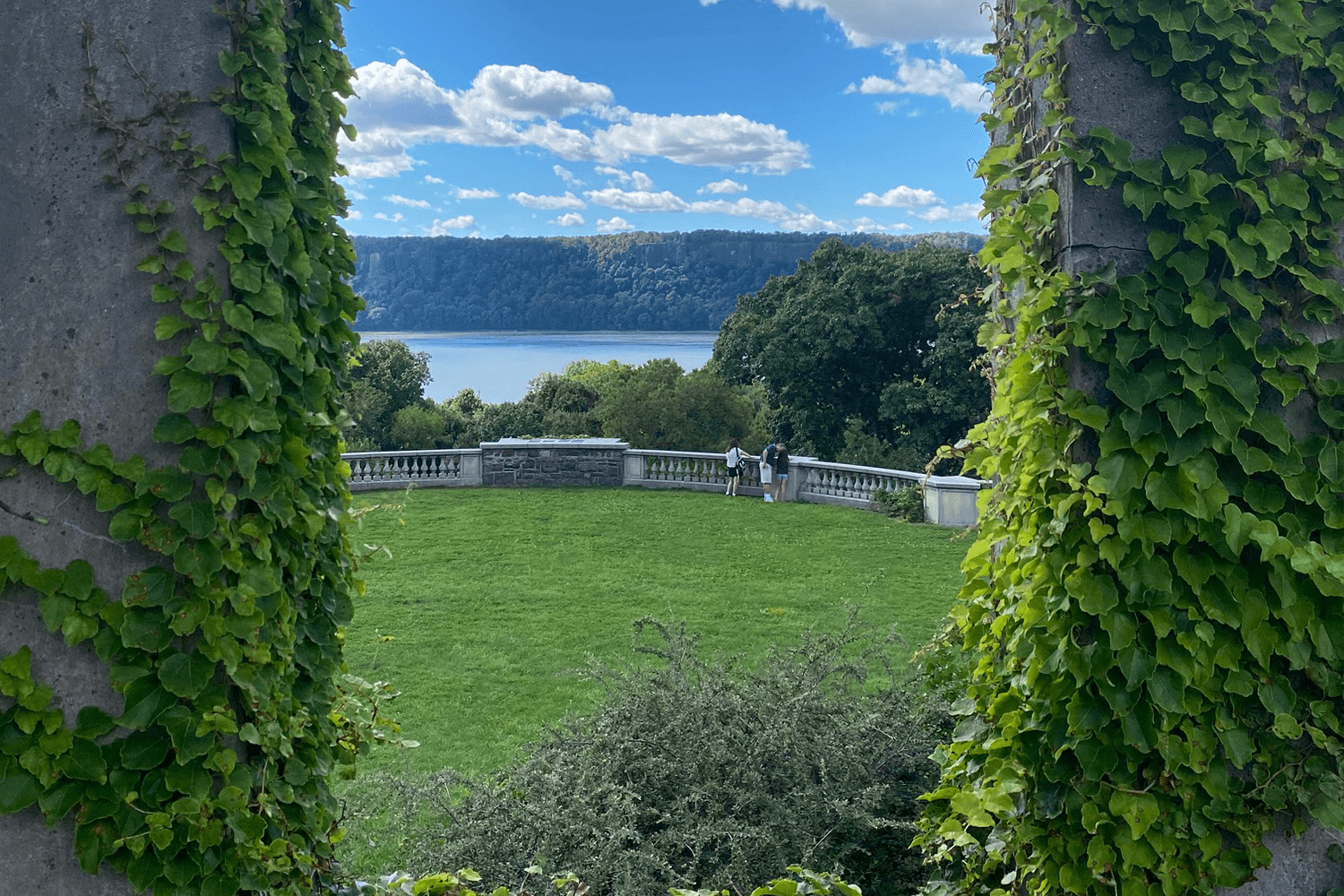
The Bronx
Van Cortlandt Park
The third largest park in the city, Van Cortlandt sits upon more than 1,000 acres of land where you can find anything from thickly wooded forests to sports fields, playgrounds, the country’s first ever public golf course, the borough’s largest freshwater lake and even the oldest house in the Bronx.
The best activities at Van Cortlandt are active ones, like playing cricket from atop the Parade Ground or hiking the Old Croton Aqueduct Trail, which covers a tunnel built during the 1830s to help bring more fresh water to the quickly growing number of New Yorkers. The trail is on the National Register of Historic Places, and within a mile, visitors will find one of the most unique forested areas in New York thanks to tulip trees and sugar maples.
Bronx Park
While the Bronx isn’t usually associated with expansive wilderness areas, it surely has them. The Bronx Park is typically known for its two most popular attractions, the New York Botanical Garden and the Bronx Zoo, but it also boasts myriad recreation areas and some of the city’s most beautiful outdoor spaces.
The park is perhaps best taken in while walking along or kayaking in the Bronx River, which starts in North White Plains and flows into the East River. There’s a two-mile stretch of river that runs through the Bronx Park and a deep gorge, where visitors can see birds, fish and unique trees. There are also literal waterfalls to chase — three of them. There’s one at River Park that you can access by entering at 180th Street and Boston Road, a twin waterfall at Mitsubishi Walk in the Bronx Zoo, and another one in the Botanical Garden.
Another interesting attraction at Bronx Park is the Concrete Plant Park, which was the site of a concrete plant from the late 1940s until 1987, and was acquired by the park system at the turn of the century. Now a waterfront rec area, it serves as a canoe and kayak launch that provides an access point to the Bronx River Corridor and also includes a waterfront promenade and several structures from the old concrete plant.
Wave Hill Public Garden
Walking into Wave Hill feels like walking into an actual fairy tale. A stunning 28-acre public garden and cultural space, Wave Hill was once the country manor of William Lewis Morris. It was later purchased by George Perkins, a financier and early conservationist, who created the gardens and deeded the property to the City of New York in 1960.
Now seasonal blooms are on view in its many flower gardens, a vine-wrapped pergola overlooks the Hudson River and the Palisades beyond, and art is on view if you feel like wandering into one of the galleries.
Wave Hill is the perfect place to come for an afternoon walk, sit on a bench with a good book or enjoy afternoon tea at the cafe located in the main Wave Hill house, where they offer a seasonal menu using ingredients from the property’s own farm in Kinderhook. One thing to keep in mind, though, is that bikes and scooters are not allowed, and while visitors are welcome to lay out on the grass, you can’t spread a blanket out.
Pelham Bay Park
Well, we’ve reached the end of our list, and the biggest park in the entire city, Pelham Bay Park. Coming in at a whopping 2,700 acres, Pelham Bay is three times the size of Central Park. To provide even more scale, there are not one but two golf courses in this park, as well as the Bronx’s only public beach and so much more.
The area has an interesting history, too, having been purchased by the Dutch West India Company from its original inhabitants, the Siwanoy. They called it “Vreedlandt,” meaning land of freedom, and that freedom was almost taken away multiple times by Europeans who tried to occupy the land. In the early 1940s there was even an English colony there led by Anne Hutchinson, who fled Puritan Massachusetts.
The best activities in Pelham Bay Park are hiking and horseback riding, since there are miles of both hiking trails and bridle paths to explore. There are also plenty of recreational activities available, like tennis and mini golf, or you can bring a towel to spend time on the shore of Orchard Beach.
This article was featured in the InsideHook NY newsletter. Sign up now for more from all five boroughs.
